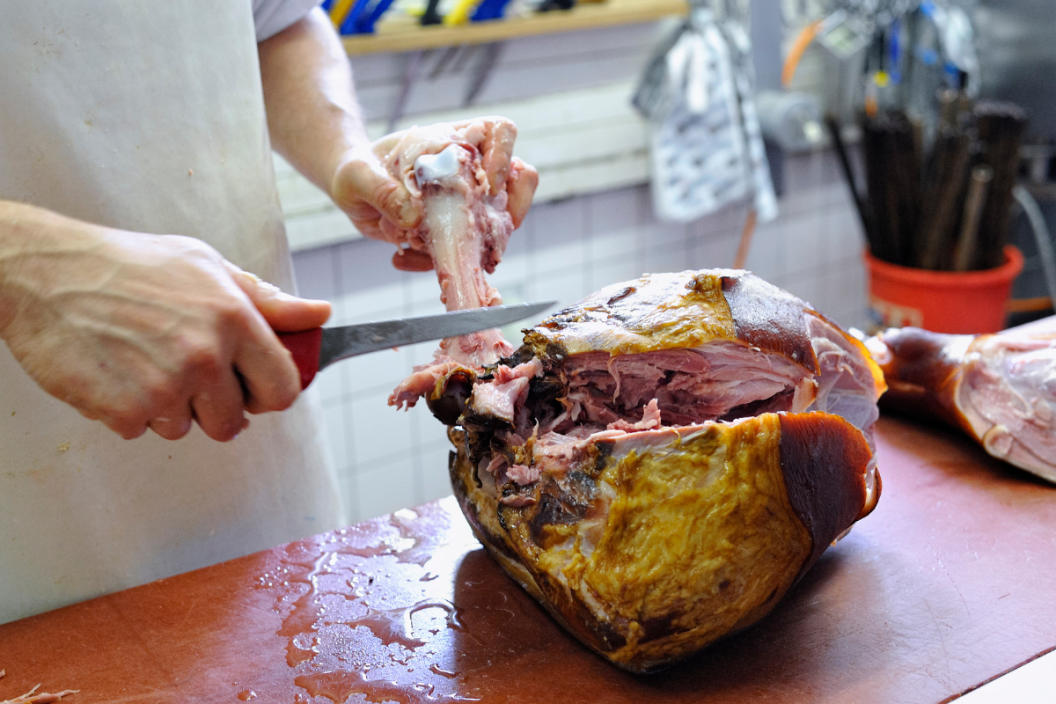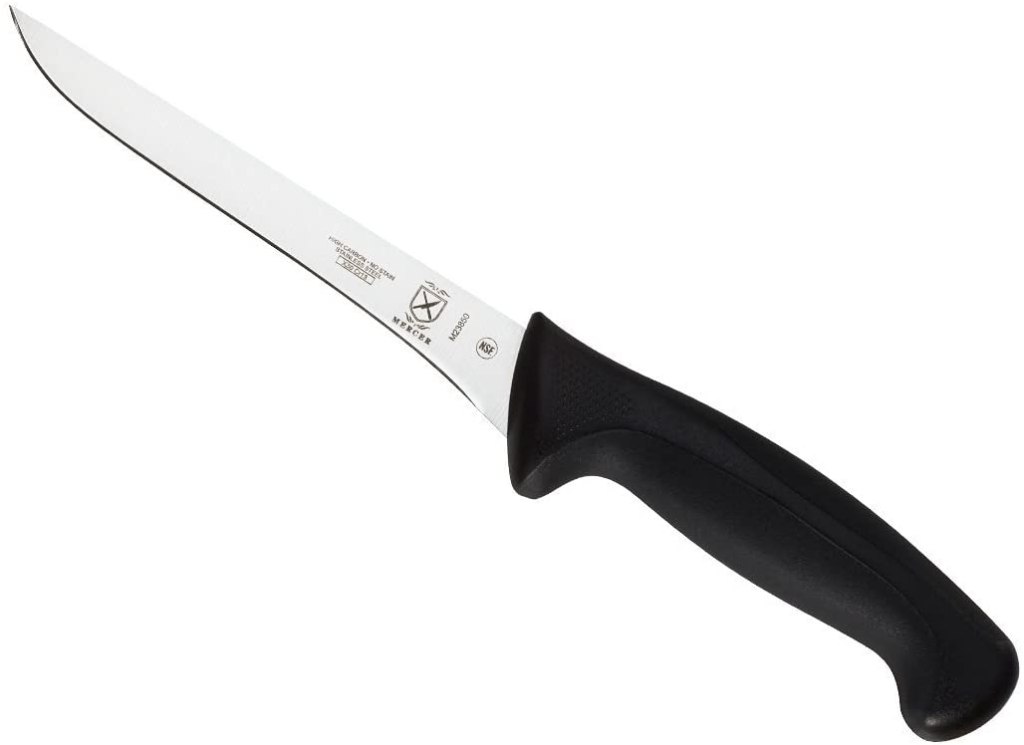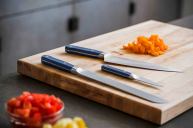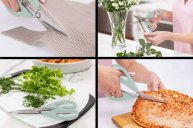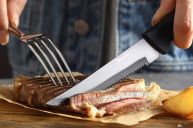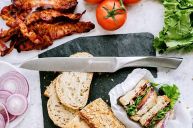Most kitchens contain a singular object I loathe: a knife block. Such countertop decorators are often expensive and full of knives you don't need—much less understand how to use. They hog up your counter space while offering very little in return. Ask anyone who has even worked in a professional kitchen, and they will tell you: the only knife you truly need is an extra-sharp chef's knife. And while that's certainly true, there are a few other knives that will make your life significantly easier, especially if you find yourself in the kitchen. Better yet, when you forego the expense of a knife set, you can invest in specific knives to meet your essential kitchen needs—such as a boning knife.
Breaking down your own meat is an excellent way to save money while teaching yourself about the cuts of meat themselves. While a chef's knife is a perfectly acceptable tool for such a task, unless you have top-notch knife skills, you're likely to leave a lot of meat behind. A flexible boning knife assists with safely and easily slicing through fat, muscle, and around bones, to leave you will beautiful and infinitely cookable cuts.
What Is a Boning Knife?
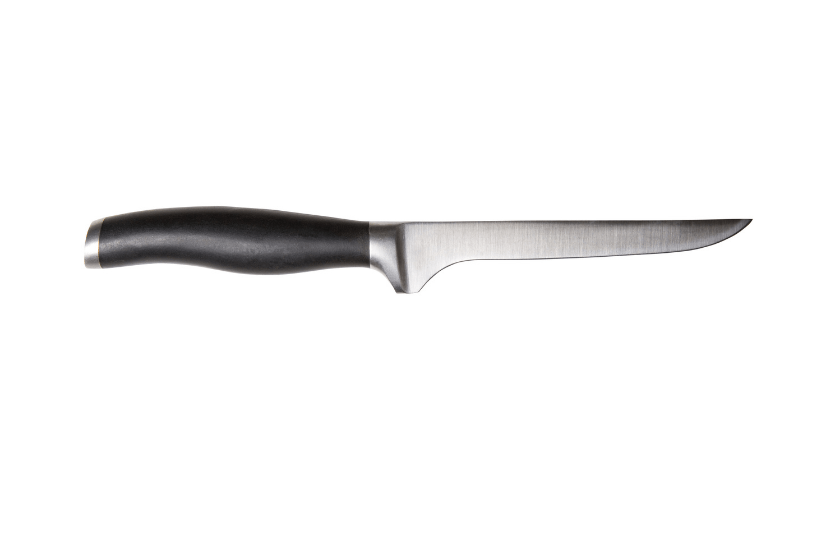
A boing knife is a long kitchen knife with a flexible blade typically used to break down meat. They come equipped with a sharp point that makes piercing meat easy with little pressure, and assists in the deboning process. While the semi-flexible blade offers some give, the blade is sturdy enough to withstand cutting through ligaments and connective tissue. A thin curved blade (sometimes similarly shaped to that of a paring knife) assists in removing all of the meat from the bone.
When using a boning knife, the thin blade should be ultra-sharp as dull blades require more pressure, and are therefore more dangerous to use. Additionally, a dull knife often leads to tearing of the meat, rather than cutting right through it.
Although often confused (and often used interchangeably) with a fillet knife, the functionality between the two differs slightly. While boing knives are designed to pull the meat away from the bone, the narrow blade of a fillet knife is meant to pull the skin away from the muscle. Because of this, fillet knives are typically used for fish fillets.
Editor's Pick For the Best Overall Boning Knife
Mercer Culinary 6-Inch Boning Knife
Editor's Note: The first time I bought a boning knife was in culinary school over ten years ago. Unsure what to purchase, I asked my instructors for their recommendations. The Mercer won as an economical choice!
I still use this knife today, especially when I break down chickens or remove fat from roasts. I wouldn't recommend anything else!
Types of Boning Knives
Boning knives come in all shapes and sizes, depending on the type of meat you think you'll be working with the most. It is a utility knife, after all—so before purchasing, think about what exactly you want to use it for.
Boning knives may differ in some of the following ways.
Blade Design
- Curved or Straight. While the curve of the knife arguably makes the task of long, clean cuts easier, straight blades typically come in handy when trying to remove large portions of meat. Traditionally, Japanese boning knives are designed with a straight blade.
- Wide or Thin. Similarly, whether or not you prefer a narrow boning knife or a wide boning knife depends on the size of the cut you're making. Narrow knives offer more dexterity, while wide knives are helpful when dealing with thick cuts of meat.
- Flexible or Semi-Stiff. If dealing with tough meat, a stiff blade will be useful as flexible blades can sometimes bend. However, springy knives are more ergonomic.
Blade Material
- Stainless Steel. This is the material that most boing knives are made of, as it is extremely durable—especially when up against sinewy meat and rigid bone.
- High Carbon Stainless Steel. Although not as strong as straight stainless steel, high carbon stainless steel blades will not break or rust over time.
Handle
- Synthetic. Synthetic materials can offer a cheaper and easily maintained knife handle. Some feature a non-slip fibrox handle, which provides you with greater control and power.
- Wooden. Wood handles are beautiful and comfortable to hold, but remember they must be taken care of: If exposed to too much water, wood handles can easily become damaged. If you're comfortable with this, many boast the merits of pakkawood handles.
- If possible, choose a knife with a full tang design, meaning the blade steel runs all the way through the handle. This assists with the weight and balance of the knife, making it powerful but easy to use.
